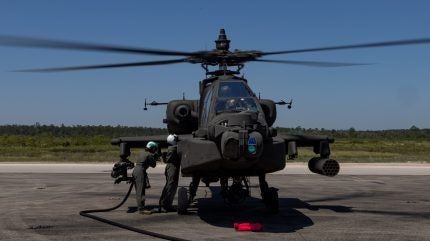
Australia has secured a sustainment support deal for its AH-64E Apache helicopter fleet from the United States, valued at approximately $300m (A$444m). This deal, approved by the US State Department and awaiting congressional clearance, highlights the growing alliance between the two nations.
The deal primarily focuses on the technical and logistical support necessary to maintain Australia’s future fleet of AH-64E Apaches.
The US State Department has also approved a potential Foreign Military Sale of AH-64E Apache helicopters and related equipment to the Government of Australia. The proposed sale includes 29 Apache attack helicopters, engines, radars, missile systems, communication equipment, and other support elements, estimated at $3bn, according to GlobalData’s “Australia Defense Market 2024-2029” report.
By ensuring the operational efficiency of these attack helicopters, Australia is enhancing its ability to respond to regional security challenges, including supporting coalition operations and contributing to mutual security goals within the region.
The deal also emphasises the deepening defence ties between the United States and Australia, one of America’s most important allies in the Pacific.
This follows recent developments in US-Australian defence procurement. On August 8, 2024, the Institute for Public Affairs recommended that Australia acquire the US B-21 Raider stealth bomber. Additionally, on August 19, 2024, the US approved a $100m deal for 350 Javelin missiles to Australia.
The principal contractors for the Apache project, Boeing Company and Lockheed Martin, are set to provide the essential engineering and technical services and the training and logistics support needed for the Australian Defense Force (ADF) to fully integrate and operate these systems. Up to four US Government and contractor representatives will be deployed to Australia for up to five years to oversee the programme’s implementation, ensuring support and knowledge transfer.
While the total cost of the agreement is currently estimated at $300m, the final figure may vary based on the eventual requirements and budget allocations, making this a flexible arrangement tailored to Australia’s evolving defence needs.




